I am a dyed-in-the-wool Anita O'Day fan as evidenced by my April 5. 2010 post titled Anita O'Day: Jezebel of Jazz & Drummer's Vocalist. Following her career you will note that there are phases: the big band years, the early 50s, the Verve years and the independent years. The latter cover a lot of territory, but this post is going to focus on her Verve years, and, specifically, on eight albums she recorded for that label. That is half of her output for Norman Granz.
Conveniently, those albums have been bundled into a bargain-priced set titled Anita O'Day 8 Classic Albums:

Albums contain the original track listing and sequence. I mention this because many modern reissues contain bonus tracks. This one does not. A case in point: Anita Sings The Winners in this set contains the twelve original tracks. There are at least two reissues of that album, one of which contains seven bonus tracks (bringing the total to 19), and another which contains eleven bonus tracks (bringing the total to 23).
With respect to bonus tracks or the lack thereof this set contains 101 tracks across four discs, and provides over four hours of Anita. That alone makes purchasing this a no-brainer.
Here is what you get:
This Is Anita (1955 12 tracks):
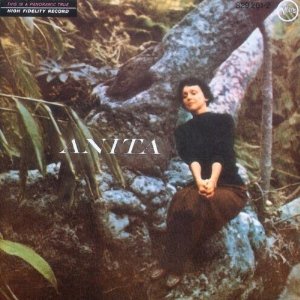
Norman Granz' then brand new label, Verve, would go on to earn accolades in the jazz recording world. This 1955 album inaugurated it.
Unlike many of Anita's reissued albums this one has the original tracklist without bonus tracks, so it's short by today's standards, but about par for an LP in 1955.
In addition to being Verve's inaugural album, this was Anita's first non-big band recording too. While she is backed by a large ensemble that was arranged and conducted by Buddy Bregman, the group swung like crazy, giving Anita instrumental backing that was a perfect match for her singing style.
A track from the album:
Pick Yourself Up (1956 12 tracks):

Why an album cover showing a 1958 photo on a 1956 album? I have no idea. What I love is the song selection, which includes swing standards like Benny Goodman's Don't Be That Way and Chick Webb's Stomping at the Savoy. In fact, every one of the original tracks on this album is a gem, as are the bonus tracks. Give the track samples a listen and I am betting that the majority - if not all - of them will bring a smile.
Another thing I love about this album is the line-up backing Anita. Buddy Bregman's band, plus Harry 'Sweets' Edison on trumpet, Paul Smith on piano, Joe Mondragon on bass, the very underrated, but much in demand during this period drummer, Alvin Stoller is a treat for me since I am a drummer. Also, Larry Bunker is on vibraphone and Barney Kessel - a charter member of the Oscar Peterson Trio - is on guitar.
From the album:
Anita Sings the Most (1957 11 tracks):
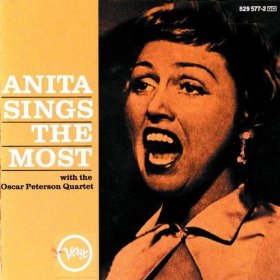
The reasons I think this 1957 gem is one of her best in this set are her backing ensemble, choice of songs and the session's white hot energy.
Backing Ensemble: Many of Anita's mid-50s albums for Verve, starting with her (and the label's) inaugural Anita released in 1955, were backed by larger ensembles. Orchestras, actually. This one featured the original Oscar Peterson line-up (Oscar on piano, Ray Brown on bass and Herb Ellis on guitar), plus Anita's favorite drummer and decades-long companion and partner-in-crime, John Poole. Milt Holland, an extraordinary multi-instrumentalist, added percussion on some tracks.
Choice of Songs: From the first medley, S'Wonderful/They Can't Take That Away From Me, Anita proves that she can sing at blazing fast tempos, then downshift into a slower tempo seamlessly and smoothly. Oscar's own penchant for fast tempos that would bedevil most drummers and bassists for decades, was unable to shake her. Even on Them There Eyes - performed at a tempo that would have left any other vocalist in the dust - Anita is right there with Oscar every note. Her tempo range is incredible, as evidenced by her beautiful rendition of Bewitched (one of my all time favorite songs and one by which I judge a vocalist's ability to sing a ballad.)
Highlights of this amazing session include John Poole's great drumming. Poole is one of my personal inspirations and one of the top brush players of his era. It's ironic that Peterson would shortly replace Ellis with a drummer - Ed Thigpen - who was another top brush player of the era. And, of course, Peterson himself. He breaks into stride-piano influenced phrases on some tracks, and on the entire album is perfectly matched to Anita's own musical abilities. Here is a clip from the album:
Anita Sings the Winners (1958 12 tracks):

When I am asked why I am so fanatical about Anita, I play this album for the inquirer and that pretty much answers their question.
My earlier piece about Anita, Jezebel of Jazz & Drummer's Vocalist explains my attraction. Her vocal stylization (her words) allowed her to sing at the fastest tempos (Four Brothers is a good example), and her phrasing on some of the songs here, like Interlude, set her apart. And the reason I call her a drummer's vocalist is because she actually took drum lessons from her first husband, Don Carter. She also has a long association with John Poole who was her drummer for decades (and is also on this album).
Every song on this 1958 album is a winner in my opinion - there is not a song nor a performance on the entire track list that I do not love, which is why I listen to it so often. In addition, tracks 13-19 are actually bonus tracks that did not appear on the original album, making this even more valuable. Here is a clip from the album:
Anita Swings Cole Porter (1959 18 tracks):

Much has been written about how great a year 1959 was for jazz. Most of the buzz is about the Big Four: Kind of Blue, Time Out, Ah Um and The Shape of Jazz to Come. I love all of those albums, and for me personally, this one is the fifth treasure from that watershed year.
First, I think that Billy May's arrangements on the first twelve tracks stand out from the remaining six that were added in from other O'Day performances of Porter's material between 1952 and 1960.) But that is a subjective call.
Second, this album seems to be destined to forever be overshadowed by Ella's Cole Porter songbook album. Side-by-side I will take this one. But please bear in mind my biases towards Anita. Instead of comparing and contrasting the two vocalists and albums I will say that my reasons for loving this one is the energy and attitude that Anita brings to her renditions.
Anita's ability to swing is infectious, and I have always loved Anita's phrasing and ability to settle comfortably into any tempo. More importantly, Porter's compositions are notoriously difficult for most vocalists, yet Anita goes through a repertoire of some of Porter's best works effortlessly. A sample from the album:
Anita SwingsRogers and Hart (1960 12 tracks):
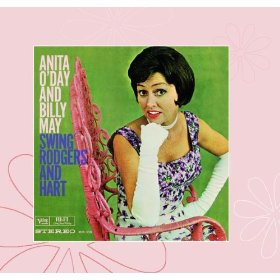
I have some minor mixed feelings about this album. There are a few reasons for this. First, even by 1960 LP standards, this album is short. Second, the first two tracks are not 'grabbers'. They are certainly excellent renditions of Johnny One Note and Little Girl Blue, but the compositions do not allow Anita to cut loose in her characteristic, swinging style.
What won me over were the arrangements on the rest of the tracks and the choice of songs. Both aspects showcase Anita's abilities as a vocalist and musician, as well as the genius of Rogers and Hart.
Another reason I love this album is Anita's rendition of one of my favorite songs: Bewitched, Bothered and Bewildered. I measure a vocalist's ability to sing a ballad by who well they handle that song. I give her an A+ on that track, and extra credit because the track is 4:22 long. Would be that the rest of the tracks were as extended. Two of my other favorite tracks on the album are I Could Write a Book and It Never Entered My Mind. Those choices reflect my personal taste and are subjective. Here is a clip:
Waiter, Make Mine Blues (1960 12 tracks):
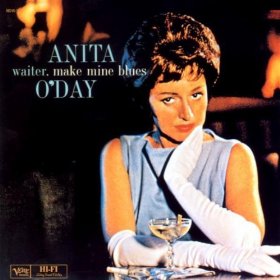
This 1961 album was recorded during three 1960 recording sessions, two of which included a fairly large backing ensemble. The other session had a much smaller group backing Anita, yet the entire album sounds cohesive. In fact, despite the larger ensemble that is on two thirds of the album's tracks, the overall feel is intimate and light. That is a tribute to both Anita's skills as a vocalist, as well as the producer and the arrangers.
Session number one was recorded in August 1960, and resulted in tracks 1, 5, 6 and 9. The backing ensemble was comprised of Geoff Clarkson on piano, Al Hendrickson on guitar, Al McKibbon on bass and the great Mel Lewis on drums. Horns are four trombonists (Harry Betts, Frank Rosolino, Ken Shroyer and Dickie Wells), and Bud Shank on alto saxophone and flute. The horn section is particularly interesting in that the low end is well anchored with the four trombones, with the upper registers handled by either an alto or flute. No trumpets! Yet it works.
The remaining two sessions were spread across two days in October 1960 and used a much larger orchestra that included strings. Also, Bud Shank from the August session, as well as Barney Kessell on guitar are members of the larger ensemble.
Listing favorite tracks is always problematic because they reflect personal preferences and are subjective. However, I will cite a few tracks that stand out for me: That Old Feeling starts out with Anita backed by Al McKibbon on bass in the front of the mix and it sounds both intimate and sensual. When Bud Shank comes in on flute, the song never fails to transport me to another place and time. Yesterdays is big sounding with a full low end from the four trombones. Mel Lewis lays down an interesting pattern with his snare drum (with snares off) and toms, then breaks into a lighter, swinging phrases that soar when Bud Shank's alto comes in. I also enjoyed Whatever Happened To You that sounds lush with the strings, and also has a nice airy feel from flute. From the album:
Travlin' Light (1961 12 tracks):
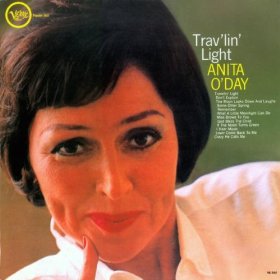
The reason this 1961 album is among my favorites by Anita (or any other vocalist for that matter) is it's her tribute to Lady Day - Billie Holiday - arguably the greatest jazz singer ever.
One of the things I love most is the way Anita does not try to mimic Billie. She did every song on this album credit and I am positive Billie would have approved, but she brought her own voice and feel to each track. Don't misunderstand - the tribute to Billie is unmistakable. Other vocalists would have possibly attempted to portray Billie and it would have been a parody in my opinion.
Favorite tracks? That is subjective, of course, but ironically, my favorites here are the same as my favorite Lady Day songs, and especially What a Little Moonlight Can Do, Miss Brown to You, and God Bless The Child.
For my fellow die hard fans and musicians, here is the list of personnel: on Trav'lin Light, Don't Explain, If the Moon Turns Green, I Hear Music, Lover Come Back to Me and Crazy He Calls Me all feature Al Porcino, Ray Triscari, John Anderson, jr. and Jack Sheldon on trumpet, with Stu Williamson, Frank Rosolino, Dick Nash and L. MacCreary on trombone. Saxophonists are Joe Maini and Chuck Gentry. The rhythm section is comprised of Russ Freeman on piano, Buddy Clark on bass, Mel Lewis on drums (with Larry Bunker on additional percussion) and Al Viola on guitar.
The rest of the tracks feature Barney Kessel on guitar, Don Fagerqust on trumpet, Ben Webster on tenor saxophone, Jimmy Rowles on piano, Mel Lewis on drums and Buddy Clark on bass. From the album:
This is by no means my last post about Anita. I will, however, not space future posts so far apart, but will not flood this blog with a cluster of them either.
I will end this one with two things:
- A promise to cover some of her big band years next
- Two parting videos
This post honor's one of Anita's staunchest fans and expert: Patrick O. Moore.

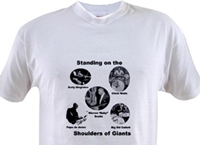

No comments:
Post a Comment